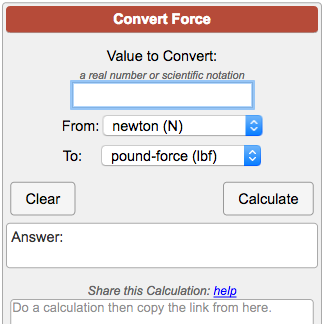Inches To Centimenter for Beginners
Wiki Article
5 Easy Facts About Inches To Centimenter Explained
Table of ContentsHow Inches To Centimenter can Save You Time, Stress, and Money.Inches To Centimenter - The FactsThe Ultimate Guide To Inches To CentimenterThe Ultimate Guide To Inches To Centimenter
This makes finding out System Conversion Device a snap as well as will certainly increase your performance dramatically while squashing the finding out curve. You can conserve lots of time by utilizing the universal converter as it works in offline mode as well. And it gives you exact conversion causes nearly all devices available for measurements.99% precise response (inches to centimenter). Given that Universal Converter application is available complimentary on shop for all systems, simply download and install the application from shop, install the application on your smartphone and also open the application, pick your conversion units and afterwards enter the worth and also click 'Convert' for results. This application is easy to use interface with providing immediate as well as precise outcome.
This proves to be an ideal remedy for field job and also you are virtually guaranteed to locate the exact conversion device when required! Customer pleasant User interface Gives Accurate Result Instantaneous Result No demand for Web Connection Gives converted outcome in all Feasible Units Universal Converter gives a precise and also instant result to all inputs.
All About Inches To Centimenter
Thanks for your survey (inches to centimenter). Sending conclusionHere is a helpful and explanatory reader-contributed system conversion utility which has been submitted for addition to the main Revit SDK examples. One primary factor gone over there is the reality that Revit inside utilizes a fixed collection of interior data source units which can not be altered.
The message mentions the basic device converter provided by the Midas, Web link example, which makes usage of hard-wired self-maintained conversion constants, and also suggests a basic hands-on hand-operated approach for identifying any needed conversion aspect (inches to centimenter). The unit conversion energy offered right here shows just how this process can be automated to prevent the need for any type of hard-coded conversion aspects at all.
One use this is to transform as well as display the interior Revit data source systems to whatever devices the individual prefers to see in the interface. It would certainly behave to accessibility this capability from our outside add-in applications as well, instead of keeping our own conversion regimens. We already discussed one idea for a technique to access the internal Revit functionality to layout unit strings utilizing the As, Value, String as well as Set, Worth, String approaches on the Specification class.
How Inches To Centimenter can Save You Time, Stress, and Money.
For completeness' purpose, we also state an additional area pertaining to units that we discussed briefly, the expedition of device types and also format alternatives by Matt and also Saikat. The appropriately name Unit, Conversion energy presented right here demonstrates accessing the internal Revit unit handling functionality to execute the inverted direction also, and also supplies an useful interface for establishing and testing unit managing performance as well as conversion variables.

If your task devices for Length are established to inches, as well as you keep into a parameter making use of Set, Value, String the string worth for 12, Revit will automatically convert 12 inches into 1 foot and also actually keep the value of 1 for you into the specification. Using Set, Value, String, you don't even have to understand that Revit has an internal system of action, not to mention what those devices of procedure are. inches to centimenter.
Unknown Facts About Inches To Centimenter
If, for instance, your task systems for Length are established to centimetres as well as you send out the string value: 18" (with the tracking double quotes), Revit will interpret that as eighteen inches and will keep the value 1. 5 (one and also a half feet) right into your criterion for you. As one more instance, having your project devices for Length readied to meters and also using Set, Worth, String with the value: 2' 3" (consisting of the single and also dual quotes) will certainly save the value 2.Revit recognizes how to other do all the string parsing for you, and will toss an exemption if you attempt to send it something it can not translate. A parallel reverse function called As, Worth, String also exists in the Revit API. This will transform a specification's inner value back to the string representation for the present task units.
5, calling As, Value, String will return the string 3' 6". Using this understanding, it is feasible to write approaches which can be made use of to help solve the device conversion trouble much more conveniently. As an example, we can create a he has a good point function to return the range aspect (multiplier) that is required for a certain set of devices of step.
If we want to keep 1000 CFM into Revit, we have to keep the worth 16. For the mathematically likely, this range variable relates to 1/60, which informs us the internal units Revit uses for air flow are Cubic-Feet-per-Second. inches to centimenter.
Report this wiki page